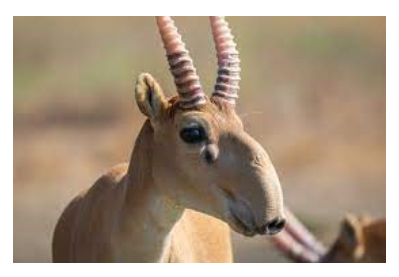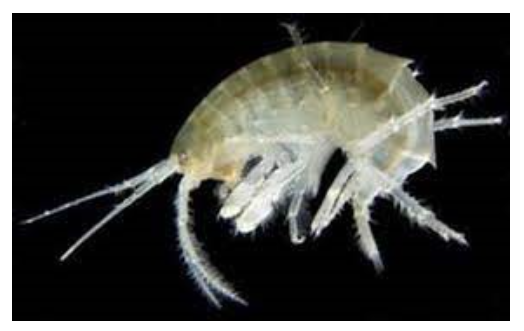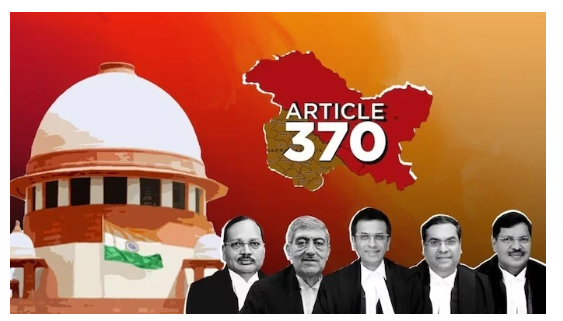Thursday, 14th December 2023
Bihar Reservation Laws: Exceeding 50% Cap
In News: In a recent development, the Bihar Assembly enacted new reservation laws, elevating the percentage of reservations for employment and education in the state to 75%.
Key Highlights of Bihar's Reservation Laws
- Recently enacted in the Bihar Assembly, the Bihar Reservation of Vacancies in Posts and Services (for Scheduled Castes, Scheduled Tribes, and Other Backward Classes) Amendment Act-2023 and the Bihar (in admission in educational institutions) Reservation Amendment Act, 2023 bring significant changes to reservation quotas.
- Under the amended legislation, a comprehensive 65% reservation is introduced, including allocations of 20% for Scheduled Castes, 2% for Scheduled Tribes, 18% for Backward Classes, and 25% for Extremely Backward Classes.
- Additionally, individuals falling under the economically weaker general category (EWS) already approved under the Central Act will continue to benefit from a 10% reservation.
Understanding the 50% Rule
- The 50% rule, historically maintained by the Supreme Court, stipulates that reservations for jobs or education in India should not exceed 50% of the total available positions or seats.
- Initially established in the 1963, In The Balaji case, it treated reservations as an "exception" or "special provision," capping them at 50% of the available seats.
- In 1976, a shift in perspective recognized reservations not as an exception but as an integral component of equality.
- Despite this, the 50% limit endured.
- The Mandal commission case in 1990 reaffirmed this limit, classifying it as a binding rule rather than a matter of prudence.
- However, exceptions exist, permitting states to exceed the limit under specific circumstances to address the marginalization of communities.
- Notably, the recent validation of the 103rd Constitutional Amendment by the Supreme Court allows an additional 10% reservation for Economically Weaker Sections (EWS).
- This implies that the 50% limit applies solely to non-EWS reservations, enabling states to reserve a total of 60% of seats or posts, including EWS reservations.
Other States Crossing the Limit
Several states have already surpassed the 50% limit, excluding the EWS quota. Noteworthy examples include Chhattisgarh (72%), Tamil Nadu (69%, under a 1994 Act protected in the ninth Schedule of the Constitution), and various northeastern states such as Arunachal Pradesh, Meghalaya, Mizoram, and Nagaland (80% each). Lakshadweep stands out with a 100% reservation for Scheduled Tribes. Previous attempts by Maharashtra and Rajasthan to breach the limit have been rejected by the courts.
Moving Forward
- It is crucial for the courts to reassess the 50% reservation cap, taking into account the evolving social dynamics, principles of equity, and the shifting socio-economic landscape.
- There should be a thoughtful discussion on broadening the exceptions beyond social exclusion to encompass a more comprehensive set of criteria for communities experiencing historical disadvantages, irrespective of geographical boundaries.
- A comprehensive examination of existing reservation policies is necessary, including a detailed review of their effectiveness, impact, and alignment with the current needs of society.
Source: TH
FSB Concerns: Crypto Intermediaries
In News: The Financial Stability Board has urged increased cross-border cooperation and information sharing among local authorities in its latest report on crypto-asset intermediaries.

Understanding Crypto Assets
- Crypto assets are digital representations of value that can be electronically transferred, stored, or traded.
- This category includes non-fungible tokens (NFTs), which are blockchain-based tokens representing unique assets like art, digital content, or media.
- NFTs serve as irrevocable digital certificates of ownership and authenticity.
Multi-function Crypto-asset Intermediaries (MCIs)
- MCIs, exemplified by firms like Binance, Bitfinex, and Coinbase, are entities providing a range of crypto-based services and products, primarily centered around operating trading platforms.
- Their main revenue sources are transaction fees from trading activities and, in some cases, fees from operating blockchain infrastructure.
Concerns Highlighted by FSB’s Report
- Transparency Challenges
- The report notes that MCIs often lack transparency about their corporate structure, with limited disclosure of information, particularly across jurisdictions.
- Transaction activities and audit practices are not consistently well-documented.
- Anti-Competitive Behavior
- Concentration of services within MCIs raises concerns about anti-competitive behavior, potentially hindering market entry for new competitors and increasing costs for users switching service providers.
- Risk Associated with Crypto-Friendly Banks
- The closure of banks supportive of crypto assets underscores the risk associated with a significant concentration of deposits linked to businesses relying on crypto assets.
- Market stress in crypto-asset markets can result in substantial losses for investors.
- Dependency on Traditional Financial Systems
- MCIs rely on banks and payment providers for transaction services, introducing the risk of counterparty issues if the trading platform ceases operations or if banks fail to offer real-time services.
- Credit Risk and Collateral Volatility
- Banks providing loans and credit lines to MCIs face credit risk, particularly when using crypto-based collaterals that may experience value fluctuations.
Financial Stability Board (FSB)
- The FSB, established in 2009 under the G20, is an international body monitoring and making recommendations about the global financial system.
- India actively participates in the FSB, represented by key officials from the Ministry of Finance, Reserve Bank of India (RBI), and Securities and Exchange Board of India (SEBI).
Path Forward
- International Cooperation and Information Sharing
- Encourage enhanced cross-border cooperation and information sharing among local authorities to regulate MCIs effectively.
- Establish international standards for transparency and reporting across jurisdictions.
- Regulatory Measures
- Develop and implement clear regulatory frameworks tailored to address the unique challenges posed by MCIs, promoting market integrity, investor protection, and financial stability.
- Corporate Transparency
- Mandate MCIs to enhance corporate transparency by providing detailed information about their structure, business lines, and operations.
- Implement measures to penalize non-compliance with transparency standards, ensuring comprehensive regulatory oversight.
|
UPSC Previous Year Questions Prelims (2016) Q. With reference to ‘Financial Stability and Development Council’, consider the following statements:
Which of the statements given above is/are correct? (a) 1 and 2 only Ans: (c) |
Source: TH
Smooth-Coated Otter - Edukemy Current Affairs
In News: The Kawal Tiger Reserve is transforming into a flourishing sanctuary for a fascinating aquatic species known as the smooth-coated otter, locally referred to as "Neeti Pilli" in Telugu.

Smooth-Coated Otter Overview
- Species Information
- The smooth-coated otter, scientifically known as Lutrogale perspicillata, represents the sole extant species in the genus Lutrogale.
- Geographical Distribution
- These otters inhabit a vast region in southern Asia, ranging from India eastward. Additionally, there exists a distinct population residing in the marshes of Iraq.
- Habitat Preferences
- Smooth-coated otters predominantly thrive in lowlands, coastal mangrove forests, peat swamp forests, freshwater wetlands, large forested rivers, lakes, and rice paddies. They are known to construct permanent burrows with underwater entrances and tunnels leading to chambers above high-water lines. Despite their aquatic adaptation, these otters are equally adept at traveling long distances overland in search of suitable habitats.
- Distinctive Features
- As the largest otter in Southeast Asia, smooth-coated otters boast adult weights ranging from 7 to 11 kg, with lengths of up to 1.3 m.
- Their fur is characterized by a smooth and shorter texture compared to other otters, ranging in color from light to dark brown dorsally and light brown to almost gray ventrally.
- Adapted for water activities, they exhibit strong swimming abilities and often engage in group hunting, adopting a V-formation while fishing upstream.
- Conservation Status
- The IUCN Red List categorizes smooth-coated otters as "Vulnerable."
Key Insights into Kawal Tiger Reserve
- Geographical Location
- Situated in the northeastern part of Telangana, the Kawal Tiger Reserve is bordered by the Godavari River on one side and the Maharashtra border on the other. It forms an integral part of the Deccan Peninsula-Central Highlands.
- River Catchment
- The reserve serves as a catchment area for the Godavari and Kadam rivers, both flowing southwards from the sanctuary.
- Connectivity and Corridors
- Kawal Tiger Reserve maintains connectivity with the Tadoba-Andhari Tiger Reserve in Maharashtra to the north and the Indravati Tiger Reserve in Chhattisgarh to the northeast.
- Diverse Habitats
- Encompassing dense forests, grasslands, open areas, rivers, streams, and water bodies, Kawal Tiger Reserve exhibits a rich variety of habitats.
- Floral Composition
- Teak and bamboo are prevalent, with an extensive list of recorded plant species, including Anogeissus latifolia, Mitragyna parviflora, Terminalia crenulata, and more.
- Faunal Diversity
- Reflective of the Deccan Plateau's characteristics, the reserve houses a diverse array of wildlife.
- Notable species include nilgai, chousinga, chinkara, blackbuck, sambar, spotted deer, wild dog, wolf, jackal, fox, tiger, leopard, and jungle cat.
Source: IE
Karrar Combat Drones - Edukemy Current Affairs
In News: Iran has recently revealed advanced Karrar combat drones equipped with air-to-air missiles, bolstering its capabilities in air defense.

Overview of Karrar Combat Drones
The Karrar combat drone is an Unmanned Combat Air Vehicle (UCAV) designed and developed by Iran, marking a significant advancement in the country's drone technology. As the first long-endurance and combat-capable Iranian drone, it plays a pivotal role in enhancing air defense capabilities, particularly along border areas.
Key Features
- Operational Range
- Introduced in 2010, the Karrar drone boasts an impressive operational range of up to 1,000 kilometers (620 miles).
- Maximum Speed
- Fueled by its turbojet installation, the drone can achieve a maximum speed of 560 miles per hour.
- Service Ceiling Altitude
- The Karrar is designed to operate at high altitudes, with a reported service ceiling reaching 47,000 feet.
- Launch and Recovery
- Notably, the drone lacks retractable or fixed undercarriage. It utilizes a rocket-assisted launch mechanism, employing a catapult launching rail, and is recovered through a parachute-retarded freefall.
- Majid Thermal Missile
- Equipped with the Iranian-made Majid thermal missile, the Karrar drone enhances its air defense capabilities.
- The Majid missile features advanced thermal and optical seekers, significantly improving tracking and interception precision.
- Strategic Deployment
- The drone is strategically deployed along border regions, providing air defense units with cost-effective capabilities to intercept and neutralize potential aerial threats.
- This approach offers a more economical alternative to traditional manned fighter sorties.
- The integration of advanced features and the utilization of cutting-edge technology position the Karrar combat drone as a notable asset in Iran's defense arsenal.
Source: WION
Saiga Antelope - Edukemy Current Affairs
In News: The International Union for Conservation of Nature (IUCN) has reclassified the species from "Critically Endangered" to "Near Threatened."

Overview of the Saiga Antelope
- Physical Characteristics
- The Saiga antelope is a large migratory herbivore known for its distinctive appearance.
- Its most notable feature is an unusually large and flexible nose, characterized by an internal structure that functions as a filter.
- This unique nasal adaptation serves multiple purposes, such as filtering out dust stirred up by the herd during warm summers and warming icy air before it reaches the lungs in cold winters.
- Habitat and Distribution
- Habitat
- Saiga antelopes thrive in open dry steppe grasslands and semi-arid deserts, adapting to diverse environmental conditions.
- Historical Range
- These antelopes were once widespread across the Eurasian Steppe, a vast grassland extending from Hungary in Europe to Manchuria in Asia.
- Current Distribution
- Presently, Saiga antelopes are found in fragmented populations within Kazakhstan, Mongolia, the Russian Federation, and Uzbekistan.
- Sub-species
- The Saiga has two distinct sub-species: Saiga tatarica tatarica, distributed in most of its range, and Saiga tatarica mongolica, exclusively found in Mongolia.
- Habitat
- Conservation Status
- IUCN- The Saiga antelope is categorized as "Near Threatened" on the International Union for Conservation of Nature (IUCN) Red List.
- CITES- It is listed under Appendix II of the Convention on International Trade in Endangered Species of Wild Fauna and Flora (CITES).
- Threats
- The Saiga antelope faces significant threats, primarily attributed to hunting activities and habitat destruction.
- These challenges contribute to the species' vulnerable status and necessitate conservation efforts to safeguard its populations.
Source: DTE
Demaorchestia alanensis - Edukemy Current Affairs
In News: Berhampur University researchers in Odisha have uncovered a novel marine amphipod species, naming it Demaorchestia Alanensis.

Demaorchestia Alanensis - A Newly Discovered Marine Amphipod
- A recent scientific exploration has led to the identification of a novel species within the marine amphipod family, specifically belonging to the genus Demaorchestia.
- The newfound species, named Demaorchestia Alanensis, enriches our understanding of these shrimp-like crustaceans.
Key Characteristics of Demaorchestia Alanensis
- Physical Attributes
- This newly discovered marine amphipod exhibits a distinctive white coloration and attains a length of less than 15 millimetres.
- Leg Structure
- Demaorchestia Alanensis boasts a remarkable anatomy featuring 13 pairs of legs.
- Among these, three pairs are dedicated to proficient swimming, eight pairs facilitate terrestrial ambulation, while the remaining two pairs are specialized for capturing prey and feeding.
- Identification Markers
- The species can be differentiated from other members of the Demaorchestia genus by the presence of two to three robust, hair-like structures, known as setae, located on the anterior margin of the propodus of the gnathopod.
Understanding the Diverse Order Amphipoda
- Amphipods Overview
- Amphipods constitute a diverse order of invertebrates classified under Crustacea.
- They inhabit a wide array of environments, including seas, lakes, rivers, sand beaches, caves, and moist tropical habitats on various islands.
- Appearance and Habitat
- Amphipods, often mistaken for tiny shrimp due to their resemblance, occupy marine, freshwater, and terrestrial ecosystems.
- Freshwater and marine beach species are commonly referred to as scuds, while those found on sand beaches are known as sand hoppers or sand fleas.
- Size and Diversity
- Ranging in size from a mere millimeter to the impressive supergiant amphipod Alicella Gigantea, measuring up to 340 mm, these creatures play a crucial role in various ecosystems as a vital food source for fish, invertebrates, birds, and marine mammals.
- Swimming Abilities
- Most amphipods exhibit active swimming behavior, propelled by three pairs of abdominal appendages.
Source: DTE
Bab al-Mandab strait - Edukemy Current Affairs
In News: The Houthis in Yemen have been directing attacks towards vessels in the southern Red Sea and the Bab al-Mandab strait.

About Bab al-Mandab Strait
- Situated between Arabia (northeast) and Africa (southwest), the Bab al-Mandab Strait serves as a crucial passage connecting the Red Sea (northwest) with the Gulf of Aden and the Indian Ocean (southeast).
- It plays a pivotal role in the maritime trade route linking the Mediterranean Sea and the Indian Ocean through the Red Sea and the Suez Canal.
- The Bab al-Mandab Strait is renowned as one of the world's most significant routes for global seaborne commodity shipments, especially for crude oil and fuel.
- It shares borders with Yemen on the Arabian Peninsula and Djibouti and Eritrea on the African coast.
Key Points about the Red Sea
- The Red Sea, a semi-enclosed inlet of the Indian Ocean, is positioned between the continents of Africa and Asia, distinguished by its status as one of the world's warmest seas.
- The northern segment of the Red Sea is divided by the Sinai Peninsula, forming the Gulf of Aqaba and the Gulf of Suez, with the latter connecting to the Mediterranean Sea via the renowned Suez Canal.
- The Red Sea is bordered by Yemen and Saudi Arabia to the east, while Egypt lies to the north and west. Sudan, Eritrea, and Djibouti border it to the west.
Source: REUTERS
Cassiopeia A Supernova: New Webb Telescope Image
In News: NASA's James Webb Space Telescope has documented a new image of a star that underwent a supernova explosion within the Cassiopeia A (Cas A) supernova remnant.

Cassiopeia A: Unraveling the Mysteries of a Galactic Supernova
- Overview
- Cassiopeia A stands as a poignant remnant, echoing the explosive demise of a massive star nearly 340 years ago.
- As the youngest remnant of its kind within our galaxy, this celestial spectacle, nestled in the Cassiopeia constellation, spans approximately 10 light-years.
- Its profound significance in unraveling the complexities of supernovae phenomena has made it the focus of extensive scrutiny by both ground-based and space-based observatories.
Supernova Explosion Insights
- The cataclysmic event known as a supernova marks the spectacular demise of a massive star. This cosmic spectacle is triggered by a transformative change in the star's core, occurring through two distinct mechanisms.
- Binary Star Systems
- In binary star systems, where two stars elegantly orbit a shared point, a carbon-oxygen white dwarf engages in a celestial theft.
- By siphoning matter from its companion star, the white dwarf accumulates an excess of material.
- The consequential overload propels the star into a dramatic explosion, culminating in a supernova.
- End of a Single Star's Lifetime
- At the culmination of a lone star's life, as it depletes its nuclear fuel, a gravitational ballet unfolds.
- Mass from the star's outer layers flows into its core, precipitating a critical mass threshold.
- The overwhelmed core succumbs to its gravitational forces, triggering a colossal implosion and subsequent explosion—a supernova spectacle.
Key Characteristics of Cassiopeia A
- Cassiopeia A, with its 340-year-old narrative, presents a compelling tableau.
- This prototypical supernova remnant, spanning 10 light-years, has evolved into a beacon of exploration for scientists delving into the nuances of stellar explosions.
- Nestled 11,000 light-years away, this celestial vestige contributes invaluable data to our understanding of supernovae phenomena and the intricate dance of cosmic forces.
Source: IT
Analyzing the Supreme Court's Ruling on Article 370
In News: The recent judgment is a historic and groundbreaking decision that affirms the sovereignty and integrity of India and respects the desires of the people of Jammu and Kashmir.
Article 370: Background and Purpose
- Article 370 in the Indian constitution granted special status to the disputed region of Jammu and Kashmir, allowing it to have its own constitution, flag, and autonomy over most matters, excluding defense, foreign affairs, and communications.
- The article was added as a temporary provision in 1949 based on the terms of the Instrument of Accession signed by the ruler of Jammu and Kashmir, Hari Singh, in 1947.
Repealing Article 370: The Government's Approach
- Presidential Order
- In 2019, a Presidential order redefined the "constituent assembly of Jammu and Kashmir" to mean the "Legislative Assembly of Jammu and Kashmir," enabling the revocation of Article 370.
- Concurrent resolutions in both houses of Parliament were passed, and the Jammu and Kashmir Reorganisation Act, 2019, bifurcated the state into two Union Territories: Jammu and Kashmir, and Ladakh.
Supreme Court Verdict: Key Findings
- Article 370 as a Temporary Provision
- The Supreme Court determined that Article 370 was a temporary provision, serving a transitional purpose to establish a Constituent Assembly and facilitate Jammu and Kashmir's integration into the Union of India.
- Governor's Powers and Proclamations
- The court upheld the governor's proclamations, stating that the governor (President in J&K's case) can assume "all or any" roles of the state legislature, and such actions must be judicially tested only in extraordinary cases.
- Unilateral Power to Revoke
- The court ruled that the President, under Article 370(3), can unilaterally notify the cessation of Article 370 without requiring the concurrence of the State government.
- Validation of Jammu and Kashmir Reorganisation Act
- The court upheld the Jammu and Kashmir Reorganisation Act, 2019, validating the creation of the Union Territory of Ladakh and emphasizing that the State legislature's views on reorganization are recommendatory.
Reasons Behind Abrogating Article 370
- Integration and Development
- Article 370 hindered complete integration and development in Jammu and Kashmir, creating a sense of separatism.
- National Security
- Abrogation aimed to strengthen national security by curbing terrorism and separatism supported by Pakistan.
- Ending Discrimination
- The move sought to end discrimination against women, Dalits, and marginalized groups.
- Transparency and Accountability
- Article 370's repeal aimed to bring transparency and accountability to the governance of Jammu and Kashmir.
- Economic Prosperity
- The abrogation aimed to boost economic development, attract investment, and create jobs in the region.
Impact of Article 370 Abrogation
- Decline in Violence
- There has been a significant decrease in terrorist incidents, with security forces countering militant activities effectively.
- Improved Economic Development
- Initiatives like PMDP and IDS have spurred economic growth, job creation, and increased tax revenue.
- Enhanced Infrastructure
- Investments in infrastructure have led to improved connectivity within the region.
- Increased Tourism
- Improved security and marketing efforts have contributed to a surge in tourist numbers.
Conclusion
The recent Supreme Court verdict reinforces the principles of 'Ek Bharat, Shreshtha Bharat' and underscores the significance of unity and good governance. This decision reflects the court's commitment to strengthening the nation's fabric and upholding core societal values.
|
UPSC Previous Year Questions Prelims (2020) Q. Siachen Glacier is situated to the (a) East of Aksai Chin Ans: (d) Prelims (2008) Q. Which one of the following is the largest (area-wise) Lok Sabha constituency? (a) Kangra Ans: (b) Mains (2016) Q. To what extent is Article 370 of the Indian Constitution, bearing marginal note “Temporary provision with respect to the State of Jammu and Kashmir”, temporary? Discuss The future prospects of this provision in the context of Indian polity. Mains (2020) Q. Analyze internal security threats and transborder crimes along Myanmar, Bangladesh and Pakistan borders including Line of Control (LoC). Also discuss the role played by various security forces in this regard. Mains (2019) Q. The banning of ‘Jamaat-e-islaami’ in Jammu and Kashmir brought into focus the role of over-ground workers (OGWs) in assisting terrorist organizations. Examine the role played by OGWs in assisting terrorist organizations in insurgency affected areas. Discuss measures to neutralize the influence of OGWs. |
Source: TH
Share the article
Edukemy’s Current Affairs Quiz is published with multiple choice questions for UPSC exams
MCQ
Get Latest Updates on Offers, Event dates, and free Mentorship sessions.

Get in touch with our Expert Academic Counsellors 👋
FAQs
UPSC Daily Current Affairs focuses on learning current events on a daily basis. An aspirant needs to study regular and updated information about current events, news, and relevant topics that are important for UPSC aspirants. It covers national and international affairs, government policies, socio-economic issues, science and technology advancements, and more.
UPSC Daily Current Affairs provides aspirants with a concise and comprehensive overview of the latest happenings and developments across various fields. It helps aspirants stay updated with current affairs and provides them with valuable insights and analysis, which are essential for answering questions in the UPSC examinations. It enhances their knowledge, analytical skills, and ability to connect current affairs with the UPSC syllabus.
UPSC Daily Current Affairs covers a wide range of topics, including politics, economics, science and technology, environment, social issues, governance, international relations, and more. It offers news summaries, in-depth analyses, editorials, opinion pieces, and relevant study materials. It also provides practice questions and quizzes to help aspirants test their understanding of current affairs.
Edukemy's UPSC Daily Current Affairs can be accessed through:
- UPSC Daily Current Affairs can be accessed through Current Affairs tab at the top of the Main Page of Edukemy.
- Edukemy Mobile app: The Daily Current Affairs can also be access through Edukemy Mobile App.
- Social media: Follow Edukemy’s official social media accounts or pages that provide UPSC Daily Current Affairs updates, including Facebook, Twitter, or Telegram channels.





